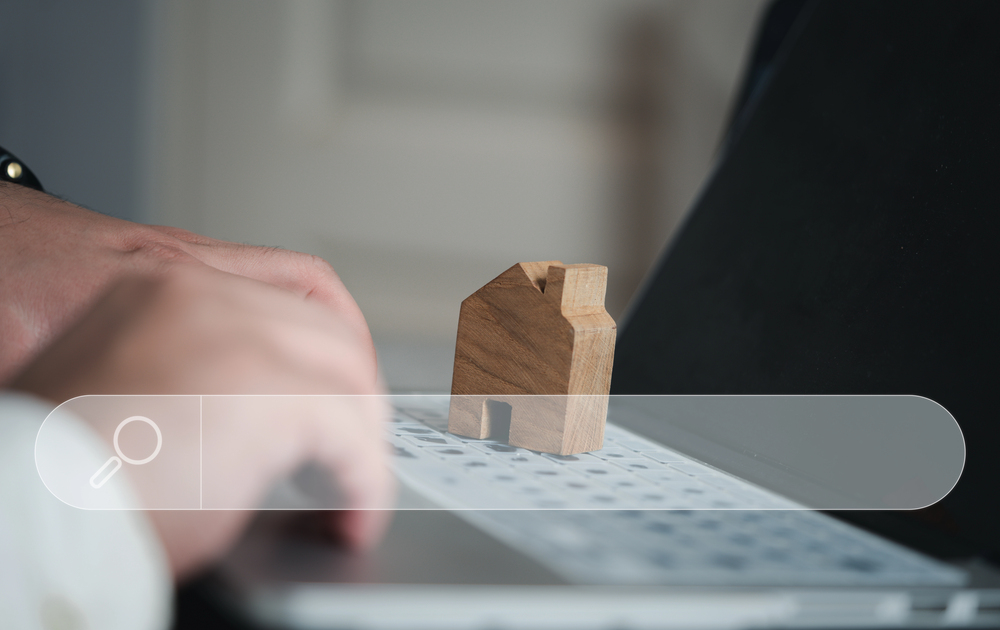Remote hearings remain a viable option for many legal proceedings following the pandemic, but not all cases are suitable for virtual formats. When to judge remote hearings appropriate depends primarily on the hearing type, complexity, and whether witness testimony is involved. Short procedural hearings, case management conferences, the handing down of judgments, and matters not requiring witness evidence typically work well remotely. However, cases involving witness credibility assessment or complex evidence presentation generally benefit from in-person proceedings. Proper preparation, technical competence, and clear communication are essential for successful remote advocacy regardless of case type.
How Did the Pandemic Transform Court Proceedings?
Nobody planned for courts to go virtual overnight. Then COVID hit, and suddenly everyone was figuring out Zoom while wearing their court attire on top and pajama bottoms below.
“Three decades ago, accessing case law and legal textbooks required physical presence in the library, which created significant limitations for practitioners with external responsibilities,” explains Emily Windsor. Think about that change – from having to physically hunt through books in libraries to now conducting entire trials from your kitchen table.
The emergency measures revealed surprising strengths in virtual courts. What seemed like temporary fixes turned out to work surprisingly well in many cases. Courts discovered they could handle routine matters efficiently without dragging everyone physically into the same building.
Today, we’re seeing the results – courts saving money, lawyers saving travel time, clients saving on fees. Many hearings that we used to assume needed in-person formality actually work perfectly fine online.
Which Types of Hearings Work Best in a Virtual Format?
Not all hearings are equally suited for remote proceedings. Experience has revealed that certain types consistently perform better in virtual environments than others.
“Short hearings, one- or two-hour hearings, and case management hearings, things not involving witnesses work very well online a lot of the time,” Emily Windsor notes. These procedural matters typically involve legal arguments between counsel and the judge without witness testimony or complex evidence presentation.
Specific examples of When to judge remote hearings well-suited for remote format include:
- Case management conferences.
- Directions hearings.
- Interim applications.
- Legal argument on preliminary issues.
- Approval of consent orders.
- Simple procedural matters.
- Handing down judgments.
These hearings typically focus on legal submissions rather than factual disputes requiring witness assessment. The efficiency gains are substantial—eliminating travel time, reducing costs, and allowing courts to process these matters more quickly.
The key distinguishing factor appears to be the absence of witness evidence. When a hearing centers on legal arguments or procedural matters handled primarily between counsel and the judge, remote platforms provide an efficient, effective alternative to physical attendance.
Why Do Some Hearings Require In-person Proceedings?
Despite technological advances, certain hearings remain better suited for traditional courtroom settings. The limitations of remote hearings become most apparent when witness credibility assessment takes center stage.
Emily Windsor observes that hearings involving witness testimony, particularly where credibility is at issue, generally benefit from in-person proceedings. “Hearings involving live witness evidence work much less well online. Some witnesses can struggle with the technology or the bundles, and it is much harder to help them in this hearing format,” she explains. A judgment has to be formed in every case.
The challenges with remote witness examination include:
- Difficulty assessing non-verbal cues and demeanor.
- Increased potential for witness coaching despite warnings.
- Technical difficulties disrupting testimony flow.
- Challenges in managing documentary evidence with witnesses.
- Reduced gravitas of the proceedings.
- Diminished court control over the witness environment.
Experience has shown that witness credibility assessment suffers in remote settings. Judges have identified cases where witnesses were clearly being prompted despite admonitions against such assistance. The subtle dynamics of cross-examination—the hesitations, expressions, and body language—prove much harder to evaluate through video feeds.
What Technical Preparation Ensures Remote Hearing Success?
Technical readiness forms a critical component of effective remote advocacy. Failing to prepare technically can undermine otherwise strong legal arguments.
“You don’t want to be in a situation where you’re fumbling with the technology while trying to make legal arguments,” Emily Windsor advises. “Technical competence is now part of professional competence.”
Essential technical preparation includes:
- Testing internet connection reliability at the same time of day as the scheduled hearing.
- Having backup connection options ready (mobile hotspot with sufficient data).
- Investing in quality audio equipment.
- Creating a dedicated hearing space with controlled lighting and acoustics.
- Developing systematic document management systems for rapid retrieval.
- Mastering screen-sharing and annotation functions.
- Testing the specific platform in advance.
- Logging in early (10 minutes before start time).
These preparations prevent technical mishaps that can damage credibility and disrupt proceedings. Professional impressions matter in virtual environments, and technical failures suggest a lack of preparation that may extend to legal arguments as well.
How Should Communication Be Adapted for Remote Hearings?
The virtual environment fundamentally alters how advocacy is received and processed by the court. Effective remote advocacy requires specific adjustments to traditional communication techniques.
Emily Windsor suggests several practical adaptations for remote hearings:
- Recalibrate speaking pace and rhythm. Deliberately slow your normal pace and incorporate definitive pauses between points.
- Use explicit signposting in submissions to help judges track complex arguments despite physical disconnection. Begin each segment with clear structural markers.
- Develop more deliberate citation methods than used in physical courtrooms. Be extremely precise when directing the court to authorities or evidence.
- Arrange communication channels with clients in advance (typically email or messaging platforms).
- Prepare contingency protocols for technical disruptions.
These adjustments compensate for the limitations of video-mediated communication while maximizing clarity and persuasiveness. The physical disconnection requires more explicit organization and signposting than might be necessary in person.
What Preparation Steps Remain the Same Regardless of Format?
While technological considerations add new dimensions to hearing preparation, core advocacy skills remain essential regardless of the hearing format.
Legal preparation fundamentals apply equally to remote and physical hearings:
- Comprehensive knowledge of the case materials.
- Thorough research of relevant legal authorities.
- Clear understanding of procedural rules.
- Anticipation of counterarguments.
- Strategic case presentation planning.
- Well-organized supporting documents.
How Do You Balance the Benefits and Limitations of Remote Hearings?
Weighing when to judge remote hearings to truly serve justice means looking at more than simple convenience. The decision demands thoughtful consideration of various practical realities that impact all parties involved. Practitioners must balance efficiency gains against potential disadvantages.
Benefits of remote hearings include:
- Significant time and cost savings on travel.
- Increased scheduling flexibility.
- Reduced delays for simple procedural matters.
- Greater accessibility for participants with mobility challenges.
- Environmental benefits from reduced travel.
- Potential for increased participant comfort in familiar surroundings.
Limitations to consider include:
- Challenges in assessing witness credibility.
- Technical difficulties that may disrupt proceedings.
- Reduced solemnity and formality of proceedings.
- Potential security or confidentiality concerns.
- Difficulties in managing complex documentary evidence.
- Reduced opportunity for immediate instruction-taking or negotiation.
The decision framework should prioritize the fundamental requirements of the specific hearing. Emily Windsor suggests asking: Does the matter involve witness credibility assessment? Is complex evidence presentation required? Would the formality of the courtroom serve an important function? How technically prepared are all participants?
When these considerations suggest in-person proceedings would better serve justice, that format should be preferred despite potential convenience benefits of remote hearings.
Q&A: Additional Questions for Remote Hearings
Do all judges have the same approach when choosing between remote vs. in-person hearings?
Many courts have established guidelines about which matters they routinely handle remotely versus those requiring physical attendance. However, some individual judges do have different comfort levels with technology, and different levels of IT support, so it is always worth checking the precise practices of each court.
What practical steps should I take when technical problems interrupt a remote hearing?
Establish contingency plans at the beginning of the hearing. Emily Windsor recommends addressing how interruptions will be handled and communication methods if technology fails. Having backup contact methods (phone numbers, email addresses) ready ensures proceedings can continue despite technical interruptions.
Which document management approaches work best for remote hearings?
Use multiple navigation methods for electronic bundles—both the bundle’s internal hyperlinks and your own system of bookmarks. Consider creating a separate document with key extracts you plan to reference, allowing quicker transitions without searching through comprehensive materials. Some advocates find having a limited paper backup of essential documents provides security against technical failures.
How has remote hearing practice evolved since the initial pandemic response?
The pandemic required immediate adoption of remote hearings for nearly all proceedings. As courts have returned to normal operations, a more nuanced approach has developed. Many courts now use remote hearings for procedural and case management matters while conducting substantive trials and witness-heavy proceedings in physical courtrooms. This hybrid approach captures efficiency benefits while recognizing the limitations of remote proceedings for certain hearing types.
Find a Home-Based Business to Start-Up >>> Hundreds of Business Listings.














































